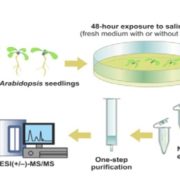
Multiple Phytohormone Screening Method
Plant Physiology: On The InsidePhytohormones are naturally occurring signaling molecules that play key roles in the regulation of plant physiology, development, and adaptation to environmental stimuli. Generally, their concentrations in plant tissues are extremely low (fmol-pmol/g fresh weight, FW). Although certain phytohormones…
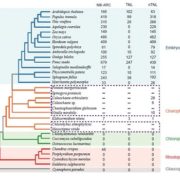
Origin of Plant R Genes
Plant Physiology, Plant Physiology: On The Inside, ResearchPlants rely on two branches of the innate immunity system to prevent or eliminate microbial infections: one involves cell surface receptors to respond to pathogen- or microbe- associated molecular patterns, and the other acts inside plant cells by using proteins with nucleotide-binding site (NBS) and…
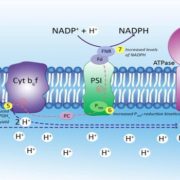
Phosphorous Deficiency and Photosynthesis
Plant Physiology, Plant Physiology: On The Inside, ResearchPhosphorus (P) is an essential macronutrient, and P deficiency limits plant productivity. P influences many aspects of photosynthesis P-deficient plants typically remain green and do not develop leaf chlorosis and yet P starvation immediately affects CO2 assimilation. Specifically, P deficiency is believed…
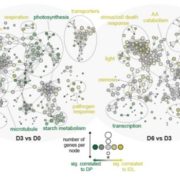
Leaf Metabolism in Response to Dark
Plant Physiology, Plant Physiology: On The Inside, ResearchOne of the more prevalent methods used to initiate plant senescence under laboratory conditions is to grow plants in prolonged dark conditions. The course of “dark-induced senescence” depends upon whether individual leaves on the plant or the entire plant is darkened: an individually darkened leaf…

Iron Accumulation and Fraxetin, a Coumarin
Plant Physiology, Plant Physiology: On The Inside, ResearchSoil pH has a strong influence on the availability of mineral nutrients and the distribution of species in natural plant communities. Iron (Fe) solubility decreases dramatically with increasing pH. In alkaline soils, calcifuge (“chalk-fleeing”) species are unable to compete due to their inability…
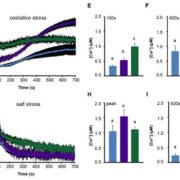
Calcium Dynamics in Chloroplasts
Plant Physiology, Plant Physiology: On The Inside, ResearchTransient changes in intracellular free Ca2+ concentration ([Ca2+]) are involved in the sensing of a wide variety of abiotic and biotic stimuli iIn plants. The unique spatiotemporal patterns in [Ca2+] that result enable specific stimulus-response coupling. Several intracellular compartments of the plant…

The Origins of Protein Storage Vacuoles
Plant Physiology, Plant Physiology: On The Inside, ResearchDuring seed development, protein reserves and minerals are stored in specialized vacuoles called protein storage vacuoles (PSVs). PSVs are functionally different from the lytic vacuoles (LVs) that serve a lysosome-like role in vegetative plant tissues. Embryonic vacuole (EVs) are also present during…
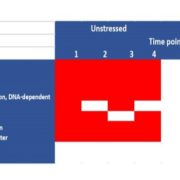
Trehalose-6-Phosphate and Reproductive Resource Allocation in Maize
Plant Physiology, Plant Physiology: On The InsideFlowering is a developmental stage that is particularly sensitive to drought; restriction of water at this time can decrease seed set, final seed number, and harvested seed yield. Kernel abortion during drought at flowering can be alleviated by supplying Suc to reproductive tissue. Consequently, Suc…
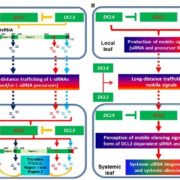
Systemic RNA Silencing in Tobacco
Plant Physiology, Plant Physiology: On The Insidegene RNA silencing is a cellular gene regulatory mechanism that is conserved across fungal, plant, and animal kingdoms. Through sequence-specific targeting, RNA silencing can degrade mRNA for posttranscriptional gene silencing (PTGS) or modify related DNA for transcriptional gene silencing. RNA silencing…

